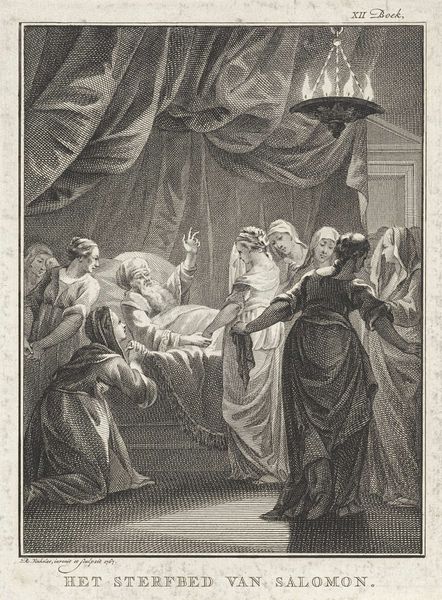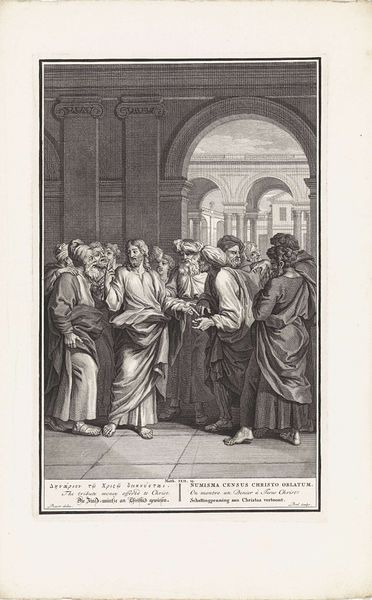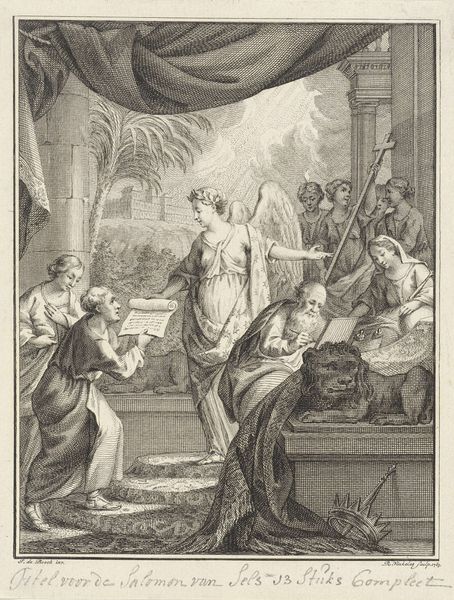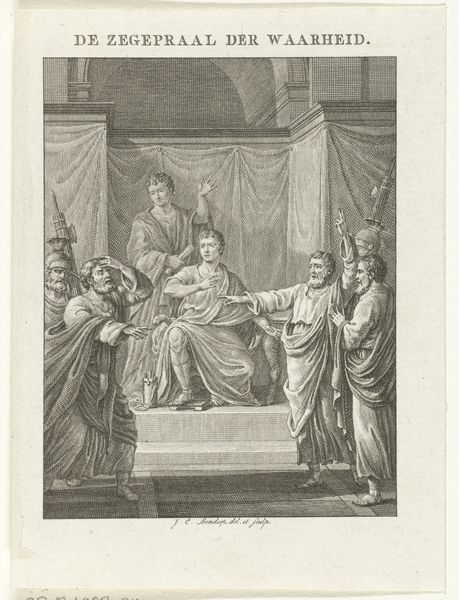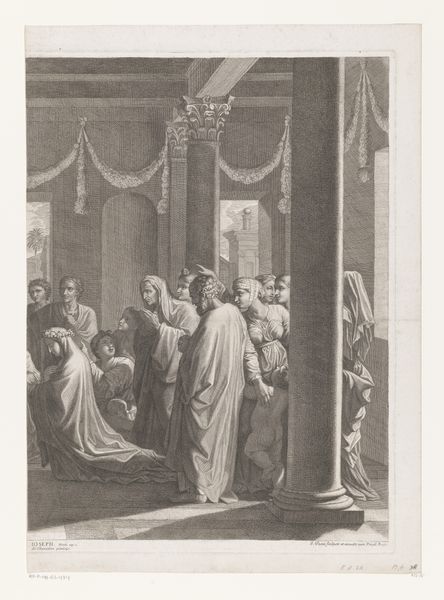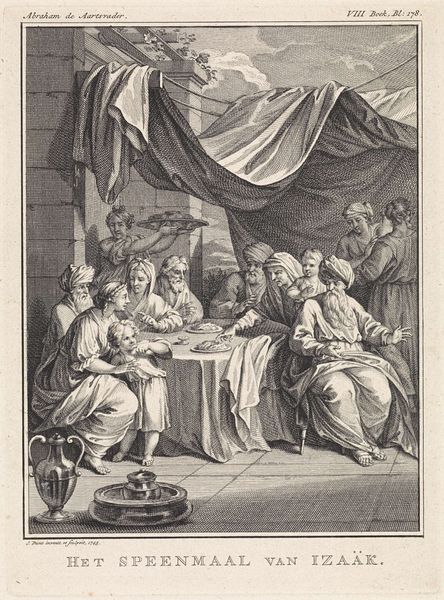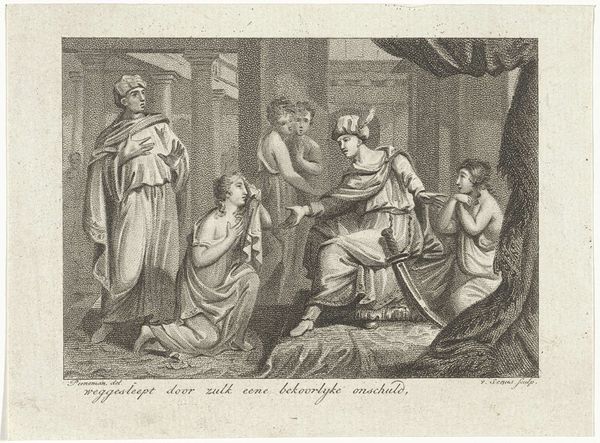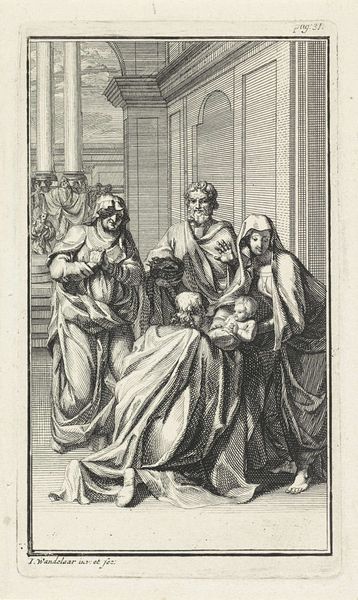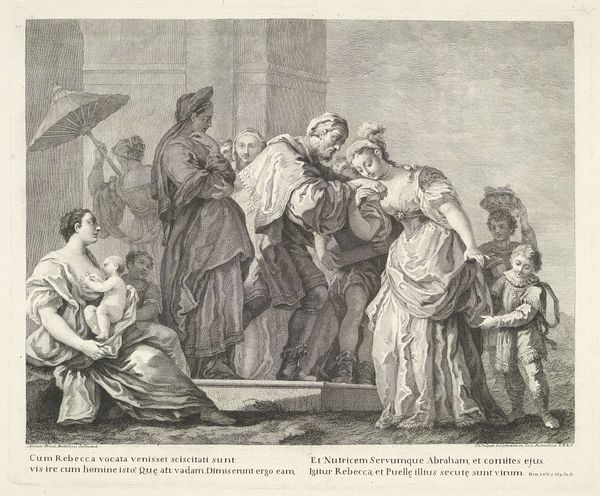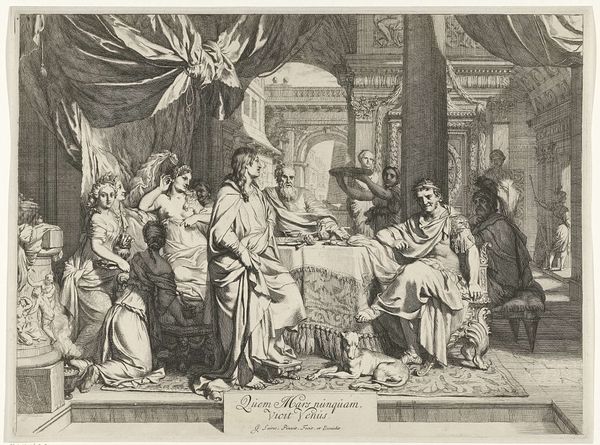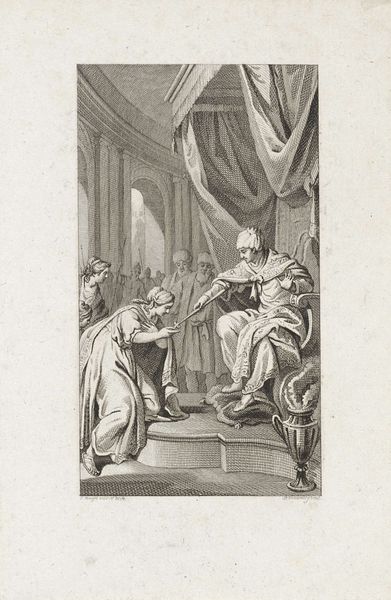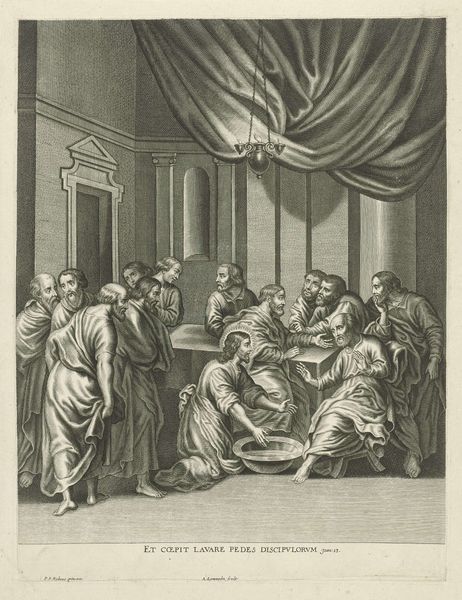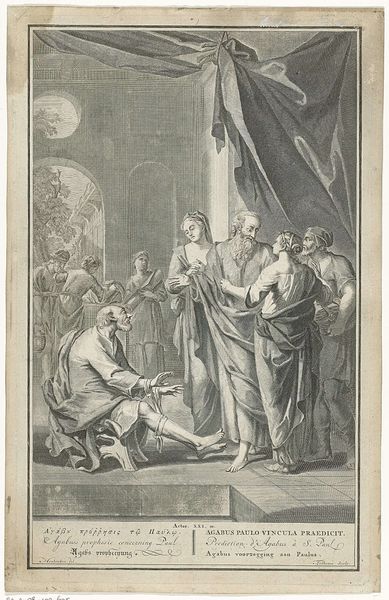
print, engraving
#
baroque
# print
#
old engraving style
#
figuration
#
line
#
history-painting
#
engraving
Dimensions: height 198 mm, width 145 mm
Copyright: Rijks Museum: Open Domain
Curator: This engraving from 1744 by Jan Punt, housed here at the Rijksmuseum, depicts "Sara Returns to Abraham." It’s a powerful scene rendered with remarkable detail. Editor: Yes, powerful indeed. The density of the line work almost overwhelms the eye initially, doesn't it? But the figures possess a real weight and solemnity despite the monochromatic rendering. Curator: Punt, a prominent figure in 18th-century Dutch printmaking, created this within a specific artistic and social context. Prints like these were not just aesthetic objects. They were crucial for disseminating historical and biblical narratives, shaping public understanding. Editor: I agree, and let’s focus on the use of line, specifically the hatching technique. Note how he builds volume and depth? Also the composition; the subtle theatrical drape that really enlivens the scene adding dramatic weight to the human interactions. Curator: Absolutely. The backdrop's architecture places the figures in an explicitly staged manner which tells you how performance shaped political messaging at the time, and suggests that women—like Sara here—were political tokens, a notion that aligns with 18th century social history. Editor: Yet look closer at Sarah’s face. Despite the limitations of engraving, Punt communicates Sarah’s emotional ambivalence. She seems caught, pulled, resisting and conforming to an expectation. I’d say she looks more the protagonist than the patriarchal subject. Curator: It's a tension certainly rendered to highlight themes of patriarchy as well as the complex entanglement of women in biblical stories which shaped social consciousness for centuries. Editor: What strikes me most now is the contrast. We have this intensely linear technique attempting to capture incredibly complex human emotions and relationships. An almost ironic disconnect for our current times! Curator: True. Looking at this work encourages us to reflect not just on artistic skills and historical norms, but also on the enduring power of visual narratives in structuring our social world. Editor: It makes you reflect, doesn’t it? Despite its age and stylistic conventions, there's an enduring quality of psychological observation.
Comments
No comments
Be the first to comment and join the conversation on the ultimate creative platform.
